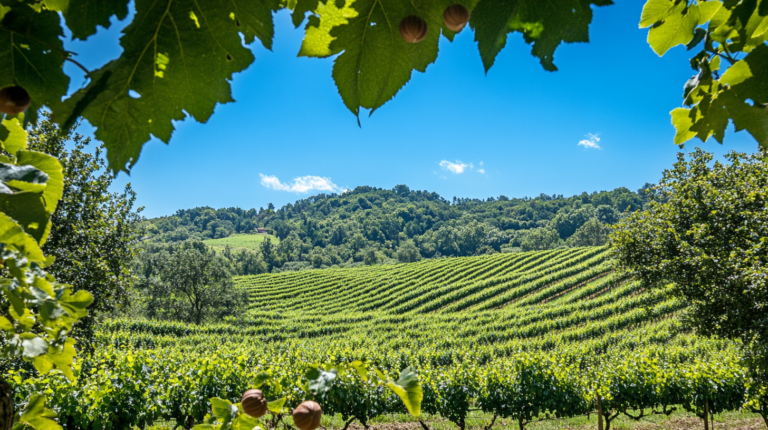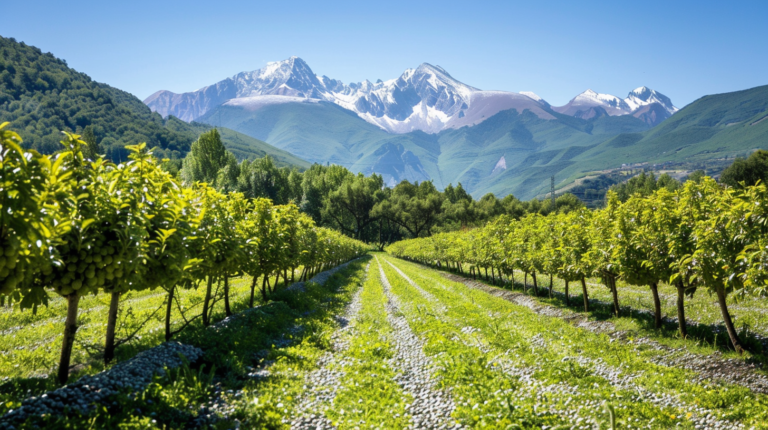Introduction to Hazelnut Varieties Worldwide
Hazelnuts, also known as filberts, are beloved for their rich, buttery flavor and versatile culinary uses. As interest in hazelnut cultivation grows globally, understanding the various hazelnut varieties and their unique characteristics becomes crucial for commercial growers, researchers, hobbyist gardeners, and the general public. This article provides a comprehensive overview of hazelnut varieties worldwide, detailing their characteristics, growing conditions, and uses.
1. Global Overview of Hazelnut Cultivation
Hazelnuts are cultivated in diverse regions worldwide, each boasting unique varieties. Key hazelnut-producing countries include Turkey, Italy, the United States, Spain, and Azerbaijan. Each country has developed distinct varieties adapted to their specific climates and soils, contributing to a rich diversity in hazelnut cultivars.
2. Popular Hazelnut Varieties
Let’s explore some of the most popular hazelnut varieties globally, categorized by their primary cultivation regions.
a. European Varieties
- Tonda Gentile delle Langhe (Italy)
- Characteristics: Renowned for its round shape, excellent flavor, and high oil content.
- Growing Conditions: Prefers well-drained soils and a temperate climate.
- Uses: Widely used in confectionery, particularly in premium chocolate products.
- Barcelona (Spain)
- Characteristics: Large nuts with thick shells and good kernel quality.
- Growing Conditions: Thrives in Mediterranean climates with dry summers and mild winters.
- Uses: Popular for both raw consumption and processed products.
b. Turkish Varieties
- Tombul
- Characteristics: Small to medium-sized nuts with a round shape and thin shell.
- Growing Conditions: Grows best in the Black Sea region’s mild and humid climate.
- Uses: Primarily used for its kernels in snacks and confectionery.
- Palaz
- Characteristics: Medium-sized, round nuts with a high oil content.
- Growing Conditions: Suited to the coastal regions of the Black Sea with well-drained soils.
- Uses: Valued for its flavor in various culinary applications.
c. American Varieties
- Jefferson (United States)
- Characteristics: Large nuts with a round shape and high kernel quality.
- Growing Conditions: Adaptable to various soil types but prefers well-drained, fertile soils.
- Uses: Consumed raw, roasted, or in baked goods and desserts.
- Yamhill
- Characteristics: Smaller nuts with excellent kernel quality and resistance to Eastern Filbert Blight.
- Growing Conditions: Thrives in the Pacific Northwest’s mild, wet winters and dry summers.
- Uses: Ideal for fresh eating, cooking, and confectionery.
d. Asian Varieties
- Giresun (Turkey)
- Characteristics: Medium-sized nuts with a high oil content and thin shell.
- Growing Conditions: Prefers the humid, coastal climate of the Black Sea region.
- Uses: Primarily used in snacks, sweets, and oil production.
- Ata Baba (Azerbaijan)
- Characteristics: Large nuts with a smooth shell and rich flavor.
- Growing Conditions: Suited to the temperate climate of the Caucasus region.
- Uses: Consumed fresh, roasted, and used in various culinary dishes.
3. Growing Conditions and Practices
Understanding the optimal growing conditions for hazelnuts is essential for successful cultivation. Hazelnuts generally prefer well-drained, loamy soils with a pH between 6 and 7. They require a temperate climate with cold winters to break dormancy and moderate rainfall throughout the growing season. Adequate sunlight and protection from strong winds are also important.
a. Soil Preparation
- pH Adjustment: Lime or sulfur may be used to adjust soil pH to the optimal range.
- Nutrient Management: Incorporate organic matter and balanced fertilizers to enhance soil fertility.
b. Planting and Spacing
- Planting Time: Late winter to early spring is ideal for planting hazelnut trees.
- Spacing: Maintain a spacing of 4-5 meters between trees to ensure adequate air circulation and sunlight penetration.
c. Irrigation and Water Management
- Water Requirements: Regular watering is crucial during the establishment phase and dry periods.
- Irrigation Systems: Drip irrigation is preferred for efficient water use and disease prevention.
d. Pest and Disease Management
- Common Pests: Aphids, weevils, and mites can affect hazelnut trees.
- Diseases: Eastern Filbert Blight is a significant concern in North America, while bacterial blight and leaf spot are prevalent in Europe and Asia.
- Management Practices: Integrated pest management (IPM) strategies, including biological controls and resistant varieties, are effective.
4. Uses of Hazelnuts
Hazelnuts are prized for their culinary versatility and nutritional benefits. They are rich in healthy fats, proteins, vitamins, and minerals, making them a popular choice for various uses.
a. Culinary Applications
- Raw Consumption: Hazelnuts are enjoyed fresh as a healthy snack.
- Roasted: Roasting enhances flavor and texture, making them ideal for snacks and cooking.
- Baking: Ground hazelnuts are used in cakes, cookies, and pastries.
- Confectionery: Hazelnuts are a key ingredient in chocolate products, pralines, and nut spreads.
b. Nutritional Benefits
- Heart Health: Hazelnuts are high in monounsaturated fats and antioxidants and promote cardiovascular health.
- Protein Source: A good source of plant-based protein for vegetarians and vegans.
- Vitamins and Minerals: Rich in vitamin E, magnesium, and fiber, supporting overall health and well-being.
c. Industrial Uses
- Oil Production: Hazelnut oil is used in cooking, cosmetics, and pharmaceuticals.
- By-products: Shells and husks are used as biofuel, mulch, and animal feed.
5. Market Trends and Economic Benefits
The global hazelnut market is driven by increasing demand for healthy snacks and premium confectionery products. Key trends include organic hazelnuts, sustainable farming practices, and the development of new hazelnut-based products.
a. Market Dynamics
- Leading Producers: Turkey dominates the global market, followed by Italy, the United States, and Spain.
- Consumption Patterns: Europe and North America are the largest consumers, with growing demand in Asia-Pacific.
b. Economic Benefits for Growers
- Profitability: Hazelnuts offer a high return on investment due to their premium pricing and diverse market applications.
- Value Addition: Processing and marketing value-added products like roasted nuts, spreads, and oil can enhance profitability.
c. Sustainability and Future Prospects
- Sustainable Practices: Emphasis on organic farming, reduced pesticide use, and biodiversity conservation.
- Research and Development: Ongoing breeding programs aim to develop disease-resistant and high-yielding varieties, ensuring the sustainability of hazelnut cultivation.
6. Conclusion
Hazelnuts are a versatile and nutritious nut with diverse varieties cultivated worldwide. Understanding the characteristics, growing conditions, and uses of different hazelnut varieties can benefit commercial growers, researchers, hobbyist gardeners, and the general public. As the global demand for hazelnuts continues to rise, sustainable cultivation practices and innovative product development will play a crucial role in shaping the future of the hazelnut industry.
References
- FAO: Food and Agriculture Organization of the United Nations
- Hazelnut Growers of Oregon: Oregon Hazelnuts
- International Nut and Dried Fruit Council: INC
- Research Articles: Relevant research articles on hazelnut cultivation and varieties.






